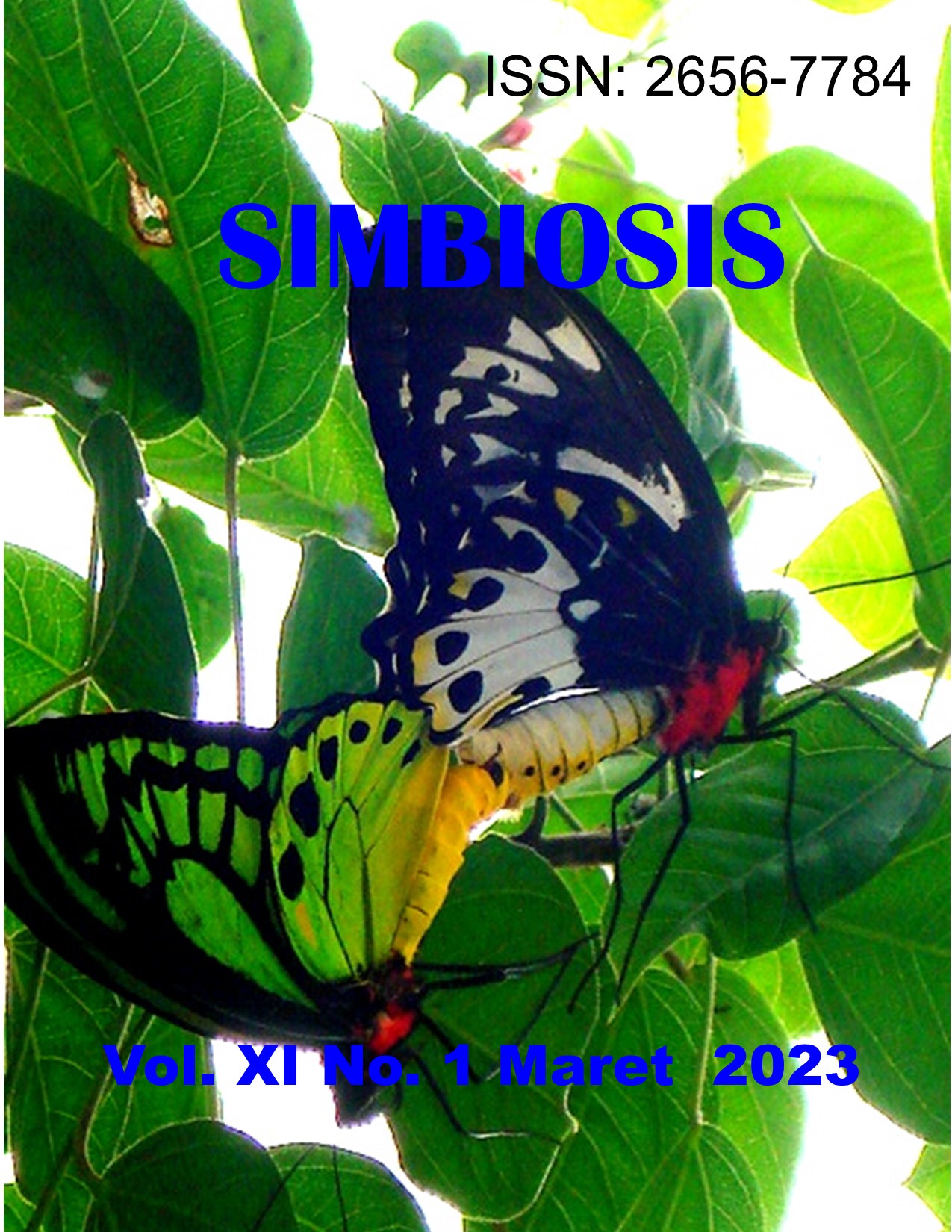IDENTIFIKASI FORENSIK BERDASARKAN PEMERIKSAAN PRIMER DAN SEKUNDER SEBAGAI PENENTU IDENTITAS KORBAN
Abstract
Forensic identification in mass disasters is carried out to determine the identity of the deceased. The identification process is important to provide psychological peace to the family with the certainty of the identity of the victim. Forensic identification methods are divided into primary examination (fingerprints, teeth, DNA) and secondary examination (medical characteristics and properties). This case study aims to determine the identity of flash flood victims in North Luwu, South Sulawesi based on primary and secondary examinations, determine the effect of the duration of the discovery on identification, and determine the further examination of unidentified victims. The research was carried out at the South Sulawesi Police Biddokes DVI post (RS. Hikmah Masamba) on 16-23 July 2020 and DNA examination was carried out at the Cell and Molecular Biology Laboratory, Faculty of Medicine, Udayana University accompanied by ethical clearance in June-August 2021. The material in In this study was the victims of the flash flood on the North Luwu, there were 40 victims, consisting of 31 victims who had been declared identified, 6 victims were missing or have not been found, and 3 victims had not been identified. Victims who are declared identified are based on the results of the examination (post mortem) which are compared with ante mortem data in accordance with the identification principle of Interpol (International Criminal Police Organization). Thirty-one victims identified were subjected to primary and/or secondary examination, of which 20 victims were identified by secondary examination and 11 victims were identified by primary and secondary examination, and 3 victims who had not been identified were conducted to DNA primary examination. Based on the results of DNA examination, it was found that the suspect's family was most likely a relative with one of the victims with a PM number 008.
Downloads
References
Arnila, G.A.P., I.K. Junitha, dan M. Pharmawati. 2016.. Variasi Genetik Masyarakat Soroh Pande di Kabupaten Gianyar Berdasarkan Tiga Lokus DNA Mikrosatelit Autosom. Jurnal Biologi. 20(1):1-5.
Azizah, A. 2009. Perbandingan Pola Pita AmplifikasimDNA Daun, Bunga Kelapa Sawit Normal dan Abnormal. Institut Pertanian Bogor. Bogor.
Butler, J.M. 2009. Fundamentalsmof Forensic DNA Typing. Academic Press. AS.
Fatchiyah. 2011. Pelatihanmanalisis fingerprinting DNA tanaman dengan metode RAPD. Laboratorium Sentral Ilmu Hayati Universitas Brawijaya. Malang.
Gennard, D. 2007. Forensic Entomology. JohnmiWiley and Sons Ltd. England.
Henky dan O. Safitry. 2012. Identifikasi Korban Bencana Massal: PraktiknnDVI Antara Teori dan Kenyataan. Jurnal Legal dan Sains Forensik. 2(1):5-7.
Hutchinson, F. 2001. DNA Band Size Semi-log Plotting. Cancer Research Center Science EducationnPartnership 06.26.01.
Junitha, I.K., dan L.E. Octavia. 2015. Studi PendahuluannnnVariasi Genetik MasyarakatttDayak di Kota Palangka Raya Kalimantan Tengah Berdasarkan Enam Lokus Mikrosatelit Autosom. Prosiding Seminar Nasional Biosains2.
Larsen, M.C., M.T.V. Conde, and R.A. Clark. 2001. Landslide Hazards Associateddwith Flash-Floods, with Examplesmfrom the December, 1999 Disaster in Venezuela. Academic Publisher. Kluwer.
Lembaga Pendidikan dan Pelatihan Polri (Lemdiklat). 2017. Disaster Victim Identification (DVI). Manajemen Bantuan Teknis Kepolisian, Sekolah Inspektur Polisi. Jakarta.
Matasyoh, G.L., N.F. Wachira, G.M. Kinyua, W.A. T. Muigai, and K.T. Mukiama. 2008. Leaf storage conditions and genomic DNA isolationnnefficiency in Ocimum gratissimum L. from Kenya. African Journal of Biotechnology. 7(5):557-564.
Maulana, A. 2019. Geological Constraints for Disaster MitigationnnnModel in South Sulawesi. Journal of Physics: Conference Series. 1341(2019):1-10.
Mirsan, A. 2020. Cara DVI Identifikasi Korban Longsor Jeneponto, Meski Sudah Terseret 30 km. Fajar.co.id. 16 Juni 2020.
Murphy, R.W., J. W. Sites, D. G. Buth dan C. H. Haufler. 1996. ProteinnnnnnnnI: Lysozyme Electrophoresis. Moleculer Systematic Sinaur Associate Inc. Massachusett, USA.
Musambil, M., F. Fathima, C.A. Mansoor, T.K. Jithesh, P.V. Mirshad, and P.G. Bhat. 2014. Triplet PrimeddRepeat PCR – an Approachable Diagnosis Method for Detecting TripletttRepeat Disorders – Friedreich Ataxia. Archives of Applied Science Research. 6(5):125-128.
Mustafa, H., I. Rachmawati, dan Y. Udin. 2016. Pengukuran Kosentrasi dannKemurnian DNA Genom NyamukkkkAnopheles barbirostris. Jurnal Vektor Penyakit. 10(1):7-10.
Ningsih, T. R., D.J. Wahyono, dan N.S.A. Gumilas. 2016. Deteksi Molekuler GennnLitik BRLF1 Epstein-Barr Virus pada Penderita KarsinomaiNasofaring. Jurnal Biosfera. 20(1):1-10.
O’Connor, K.L. 2011. Interpretation of DNA TypingggResults for Kinship Analysis. USCIS Working Group ondDNA Policy, National Institute of Standards and Technology. Washington, DC.
Peraturan Kapolri No.6. 2017. Susunan Organisasi dan Tata Kerja SatuanooOrganisasi Pada Tingkat Markas Besar Kepolisian Negara Republik Indonesia.
Prawestiningtyas, E., dan A.M. Algozi. 2009. Identifikasi Forensik Berdasarkan PemeriksaanmmnPrimer dan Sekunder Sebagai Penentu Identitas Korbannpada Dua Kasus Bencana Massal. Jurnal Kedokteran Brawijaya. 25(2):87-94.
Putri, N.P.P.E., dan A. Yudianto. 2016. Pengaruh Tanahhidan Air Laut Terhadap Kualitas DNA dari Otot Psoas Jenazah melalui Metode STR. Jurnal Biosains Pascasarjana. 1(18):203-219.
Saparwoko., A. 2006. DVI in Indonesia. DVI Workshop. Bandung.
Shenghe, C., S. Wei, Z. Zhaoxi, L. Jingyang, D. Minjie, and S. Haiyan. 2016. A Weird DNA Band in PCRRand It’s Cause. Journal of Plant Science and MolecularmBreeding.
Sinaga, A., L.A.P. Putri, dan M.K. Bangun. 2017. Analisis Pola Pita Andaliman (Zanthoxylum Acanthopodium D.C) BerdasarkannnPrimer OPD 03, OPD 20, OPC 07, OPM 20, OPN 09. Jurnal Agroekoteknologi. 5(1):55-64.
Upayogi, I.N.T. 2019. Kajian Eksplanasi Taru Menyan Penetral BaumMayat. Jurnal FilsafatkiiIndonesia. 2(1):37-41.
Wasdili, F.A.Q., dan T. Gartinah. 2018. Penentuan Kualitas Isolasi DNA Salmonella typhimuriummdengan Metode Spektrofotometri dan Elektroforesis.PPINLITAMAS. 1(1):578-582.
Yudianto, A., F. Setiawan, and R. Sumino. 2021. PaternityTTest Through KinshipAAnalysis as Forensic Identification Technique. Journal of Medicine. 53(2):7-14.
Yudianto, A., F. Setiawan, and S.M.M. Nzilibili. 2021. Sibling Indices as Comparisons in Personal IdentificationmiProcess through Short Tandem Repeats [STR] Loci CSF1PO, THOI, TPOX, vWA of Maduranese Ethnic inmSurabaya. Journal of Tropical Biodiversity and Biotechnology. 6(2):1-6.

This work is licensed under a Creative Commons Attribution 4.0 International License.










